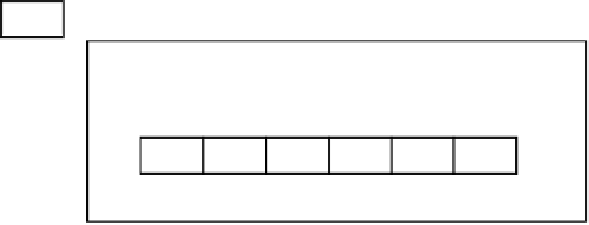Java Reference
In-Depth Information
We begin our definition of the class
Stack
as follows:
public class Stack {
final static int MaxStack = 100;
int top = -1;
int[] ST = new int[MaxStack];
//the rest of the class goes here
} //end class Stack
Valid values for
top
will range from
0
to
MaxStack-1
. When we initialize a stack, we will set
top
to the invalid
subscript
-1
.
We can now declare a stack variable,
S
, with this statement:
Stack S = new Stack();
When this statement is executed, the situation in memory can be represented by that shown in Figure
4-1
.
S
-1
top
ST
0
1
2
3
4
5
Figure 4-1.
Array representation of stack in memory
This represents an empty stack. We will need a function that tells us whether a stack is empty. We can add the
following instance method to the
Stack
class:
public boolean empty() {
return top == -1;
}
This simply checks whether
top
has the value
-1
.
The major operations on a stack are
push
and
pop
. To push an item,
n
, onto a stack, we must store it in
ST
and
update
top
to point to it. The basic idea is as follows:
add 1 to top
set ST[top] to n
However, we must guard against trying to add something to the stack when it is already full. The stack is full when
top
has the value
MaxStack - 1
, the subscript of the last element. In this case, we will report that the stack is full and
halt the program. Here is the instance method,
push
, in the
Stack
class:





Search WWH ::

Custom Search